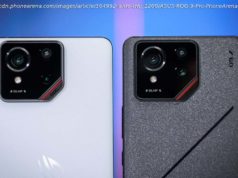Volkswagen’s Beetle has lived a long and full life in its many iterations. That doesn’t mean VW never considered replacing it with something else, though.
When Adolph Hitler first tapped Ferdinand Porsche in the 1930s to build the Kraft durch Freude (KdF) Wagen, or the Strength through Joy Car (aka the Beetle), there was no way of knowing that something associated with one of the worst people in human history would go on to become so iconic and beloved by the world.
Hitler wanted an inexpensive car German citizens could afford – a volks wagen, a « People’s Car. » His vision was to have thousands of these shiny cars zipping along the autobahn to show that Germany had crawled back from the devastation of World War I and was once again a strong, unified nation. Then World War II started.
By then, Volkswagen had built approximately 600 cars, but as soon as the war began, civilian production ceased, and every one that rolled off the assembly line went straight into military use. Hitler himself received the first convertible. Civilian production resumed shortly after the war ended (in 1945), and by the end of 1946, more than 10,000 had been made.
In 1949 it finally made it to America, and in August 1955, Volkswagen produced its one-millionth Bug. In 1972, it became the world’s most-produced car ever. When all was said and done, 21,529,464 had been sold during its production run. But as far back as the early 1950s, VW looked at replacing the wildly popular Beetle. Here are five of the more than 70 designs considered as the heir apparent.1955/56 EA47-12
If there was a first proper replacement for the Beetle, it was the EA47-12. The number twelve designates it was the 12th of 15 prototypes built between 1953 and 1956, while the « EA » stands for Entwicklungsauftrag, meaning « development order. »
Since Volkswagen had no in-house coachbuilding team, they relied heavily on outside companies. In this case, they used Italian designer Ghia (of Karmann Ghia) to build a more elongated body than the Beetle’s and looked more like a conventional compact car.
The rear-mounted 1.2-liter 72.7 cubic inch air-cooled boxer powerplant had only four cylinders, produced 30 horsepower, and maxed out at 50 miles per hour. However, it did include what was at the time some very sophisticated high-end equipment, including torsion bar rear suspension, a transverse link front axle, and a fully synchronized 4-speed gearbox.
Ultimately, VW did not put this car into production as it was more interested in returning profits to the company to expand its dealer network and improve production facilities.






